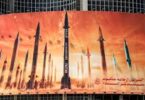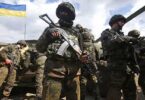Maksym Skrypchenko
As the second anniversary of the full-scale Russian invasion approaches, Ukraine finds itself at a crossroads. Waning external assistance is now a reality that threatens its future. For months now, United States President Joe Biden has been unable to push through Congress an aid package for Ukraine due to opposition within the Republican Party. Meanwhile, Europe is grappling with its own limitations. Germany, despite increasing its military aid, has stopped short of providing pivotal Taurus missiles. The United Kingdom’s ongoing support is also clouded by uncertainties surrounding its upcoming general election.
But even if European assistance were to remain at its maximum potential – a scenario far from the current reality – the aid remains woefully inadequate when compared with Russia’s firepower and resources. For instance, France’s recent plan to provide 3,000 155mm shells monthly pales in comparison to Russia’s daily barrages of up to 20,000 shells. As support for the Ukrainian army from its allies has declined, the Russian war machine – adept at circumventing sanctions and fuelled by unchecked oil sales – has intensified its offensive. Ukraine, now facing a dire shortage of critical military supplies, such as artillery shells and air defence munitions, including Stingers and even Patriot missiles, has been forced into a defensive posture. The waning effectiveness of Ukrainian air defences has led to its heightened vulnerability to aerial assaults and increased civilian casualties.
Despite the challenges, Ukraine has not succumbed to despair. Instead, it has embarked on a path of self-reliance, a journey marked by resilience and strategic innovation in the face of adversity. Ukrainian defence is transitioning from urgent procurement to boosting its own weapons production and forming strategic partnerships with foreign defence companies. This shift is meant to enhance Ukraine’s native defence capabilities in the long term. Ukraine’s innovative approach to the use of drones, particularly first-person view (FPV) drones, epitomises its focus on self-standing. The effectiveness of these low-cost devices is underscored by their versatility and precision. Capable of neutralising enemy infantry in trenches and destroying high-value targets like armoured vehicles, these drones have altered warfare dynamics.
By way of example, one report on Russian equipment losses indicates that from September 17 to October 17, FPV drones were involved in about 35 percent of elimination operations. During this period, 388 cases of Russian equipment destruction were documented with 146 units destroyed by FPV drones. The attacks destroyed $140m in equipment, including a $25m Tor air defence system. Because they have become such a critical component of Ukraine’s military strategy, FPV drones are now at the centre of a nationwide effort to scale up production. Not only are companies expanding their own production lines, but there are also open calls and courses for ordinary citizens to help in the assembly effort. As a result, Ukraine aims to manufacture at least a million such drones in 2024.
The scale-up of production has also helped decrease the cost of each drone from $400 to $350. By comparison, a US anti-personnel kamikaze drone, the Switchblade 300, can cost 12 times more, and a barrage munition, the Switchblade 600, can be 200 times more than a Ukrainian-made FPV drone. Ukraine’s focus on self-sufficiency extends to the production of heavy weaponry, of which the 2S22 Bohdana self-propelled artillery unit is a prime example. At least 30 Bohdanas have been manufactured during wartime. Reportedly, none has been lost so far with only a few units damaged and under repair.
In total, 25 enterprises and about 400 specialists are involved in Bohdana production, which has been kept decentralised to protect it from enemy attacks. Scaling up the manufacturing of this howitzer is crucial because Ukraine’s allies have not been able to supply enough 155mm artillery systems to meet its needs. National production is also significantly decreasing the cost of one unit – currently at about $2.5m. Ukraine has also sought to establish various defence cooperation schemes with allies. One example is the collaboration with Germany’s Flensburger Fahrzeugbau Gesellschaft, which will establish a repair centre in western Ukraine, significantly boosting maintenance efficiency for assets like Leopard tanks while providing on-site training for Ukrainian mechanics.
Another German arms manufacturer, Rheinmetall, has already set up a repair workshop for tanks in Ukraine and has recently announced plans to establish a factory to produce 155mm ammunition in a joint venture with a Ukrainian partner. Ukraine has also concluded an agreement with the Czech Intergovernmental Defence Cooperation Agency for the establishment of a weapons production cluster and with Swedish BAE Systems for the joint manufacturing of the CV-90 infantry fighting vehicle. This drive towards self-reliance is not just a wartime response but a strategic vision. Ukraine aims to build a robust defence industry that can reduce its dependence on external support, help win the current war and develop a strong military deterrent against future threats. It also aims eventually to become a significant arms exporter, leveraging its defence sector for economic and geopolitical gains. The shift towards self-reliance and innovative strategies stands as a testament to Ukraine’s resilience. Support from its allies may be diminishing, but Ukraine’s determination to win this war and ensure a bright future for its citizens is not.







